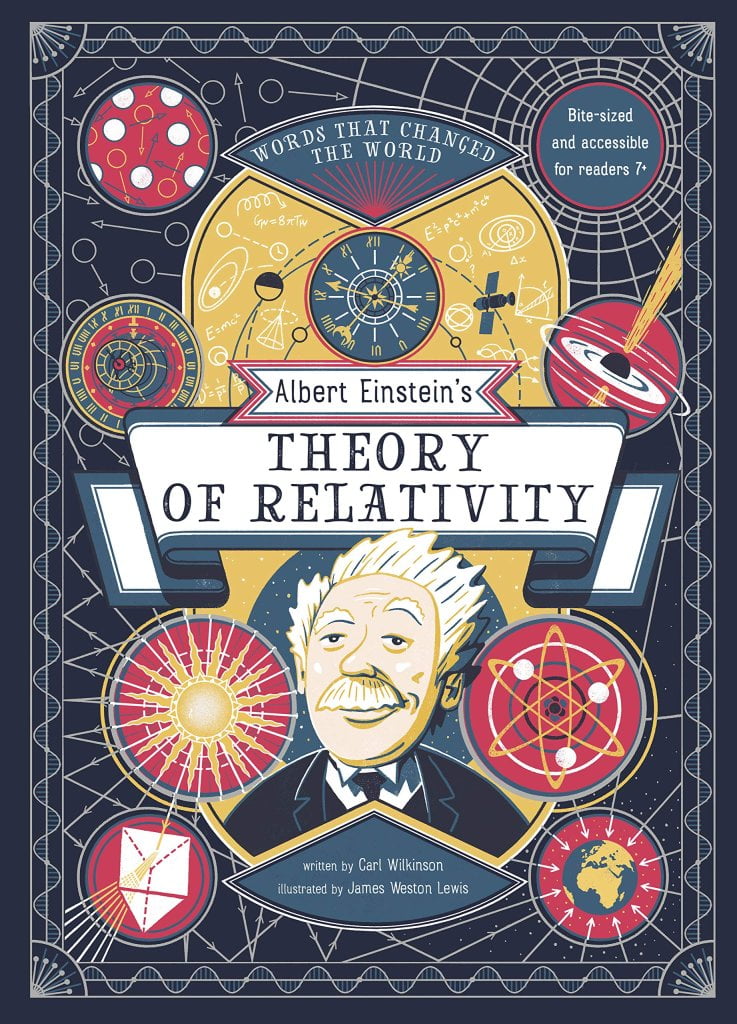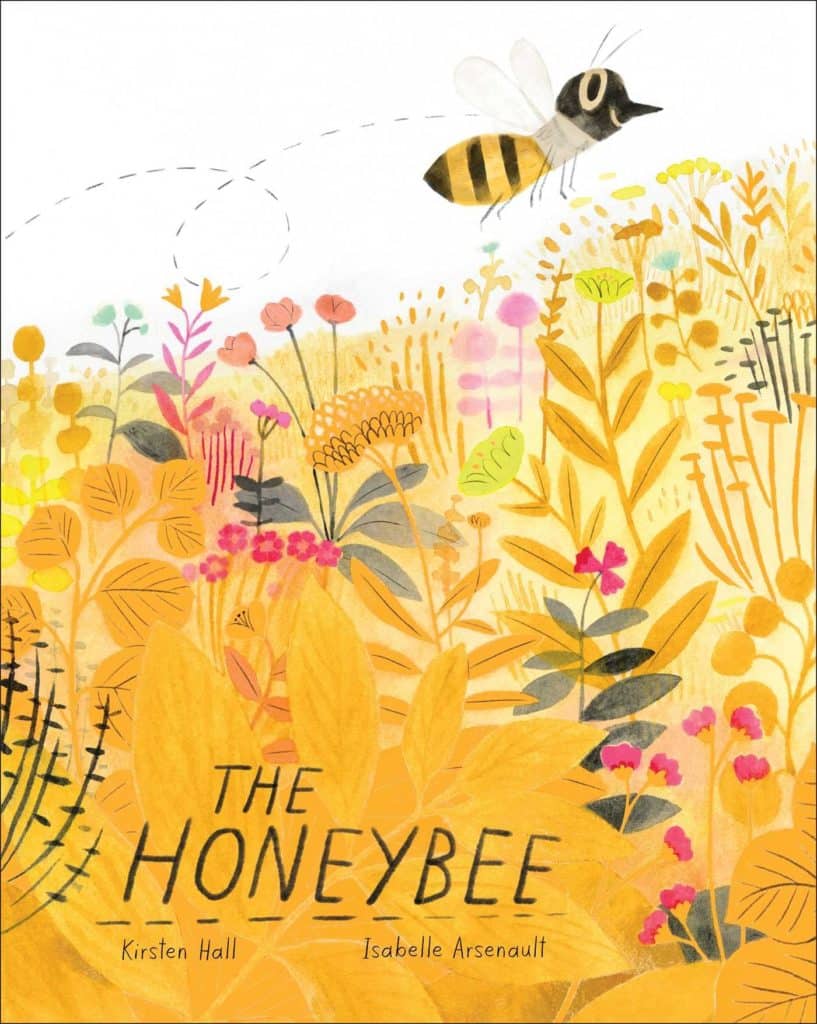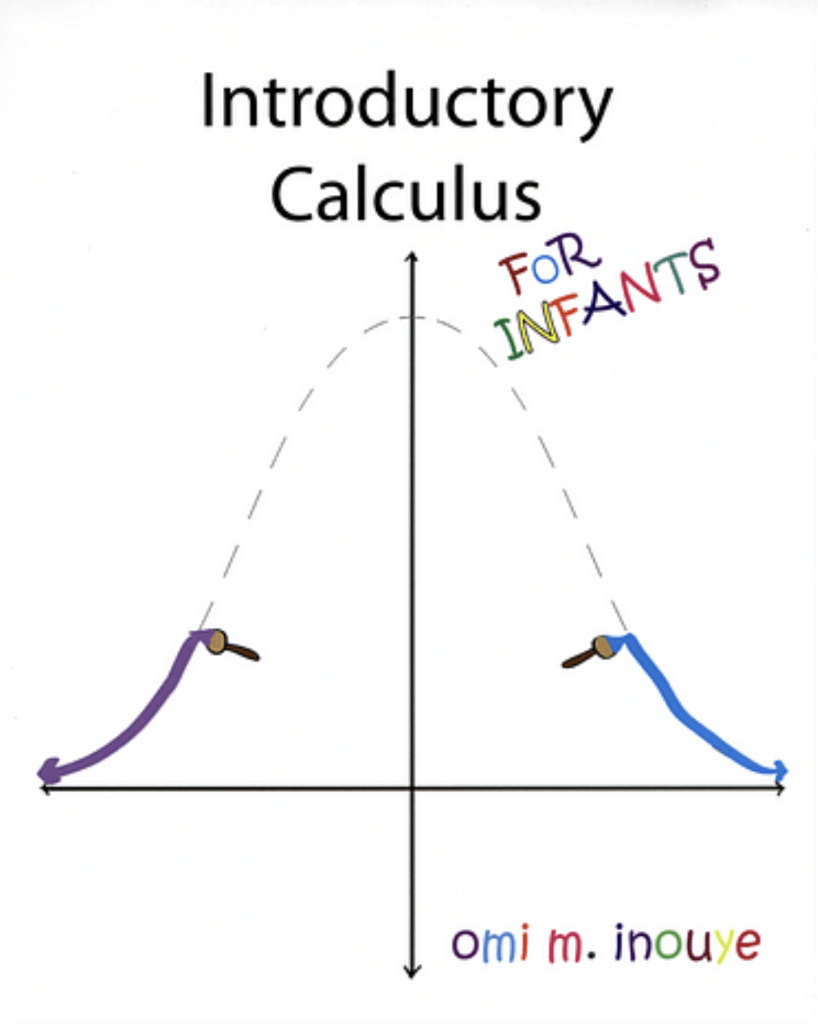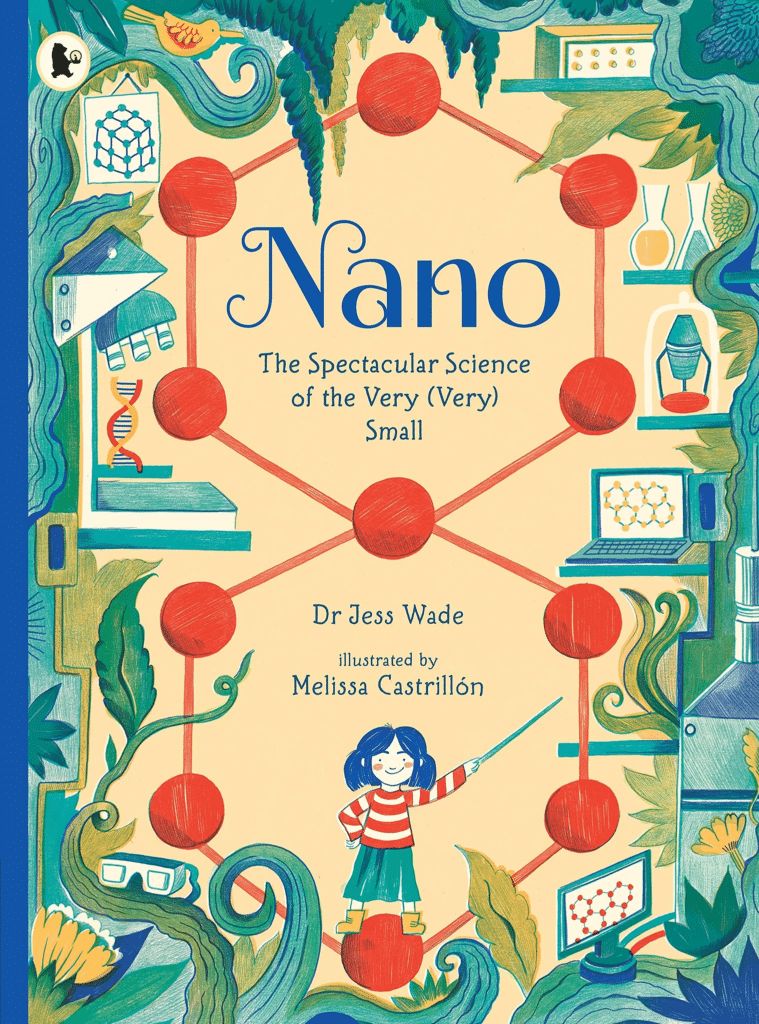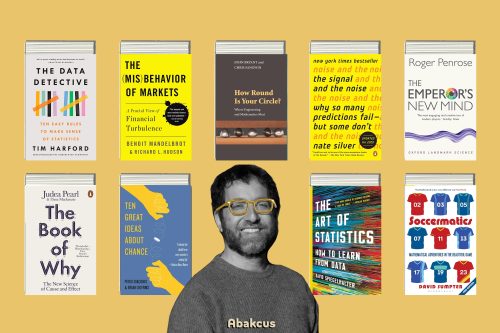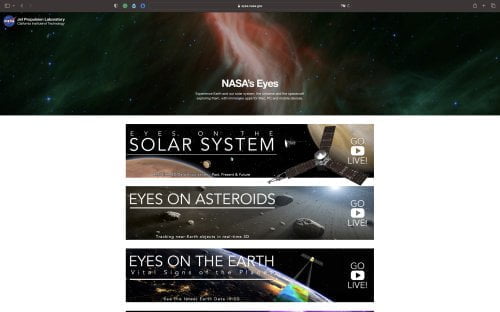STEM books are crucial to a child’s success. (I am not talking about these books) As modern technology continues to advance, industries are becoming more specialized, and the demand for STEM-proficient individuals is higher than ever before. Implementing STEM subjects into your child’s education is essential to prepare them for future career opportunities.
STEM books for kids provide a unique approach to learning about science, technology, engineering, and math and can inspire your child’s enthusiasm toward these subjects. In this directory, you will find 50+ beautiful STEM books for your child’s learning journey.
Why STEM Books Are Essential for Your Kids’ Curiosity?
STEM books for kids provide a wealth of knowledge that cannot be found within a standard textbook. Since children’s books are already filled with diagrams, pictures, and illustrations that bring the material to life, STEM books provide accurate information and teach scientific theory through engaging stories that pique your child’s interest.
In addition, the science projects included in STEM books teach creative problem-solving and critical thinking, which are necessary skills that will benefit your child throughout their adult life.
STEM books offer various reading materials catering to different learning styles. There are books for beginners, intermediate, and advanced learners. STEM books can be read individually or with a teacher or parent to facilitate group discussion or answer questions about the topics. STEM books not only focus on the theories of science but address real-world problems and their solutions, encouraging children to think outside the box and develop innovative solutions.
STEM books are not only interesting and educational but also inclusive. Children with diverse backgrounds and interests can find a STEM book that speaks to them. There are STEM books that cater to specific interests, such as space, robotics, or biology, and books that include characters of all races, genders, and abilities. This inclusivity can help children feel more seen and valued, an essential aspect of child development.
Furthermore, STEM books can prepare your child for future job opportunities. STEM jobs continue to grow, and the workforce requires skilled individuals with a background in STEM fields. Moreover, the number of women in stem is rapidly increasing! Reading STEM books allows children to explore their interests, discover what they are passionate about, and potentially choose a career path. STEM books teach children up-to-date skills and knowledge that employers need in their workforce. They also encourage children to view these career fields through a new, exciting lens.
50+ Awesome STEM Books for Kids to Make Them Love Science, Math, and Engineering!
Again, STEM books are essential in your child’s education as they provide a unique approach to STEM subjects and inspire creativity, critical thinking, and problem-solving. Below, you will find 50+ best STEM books for your kids!
Teachers and parents should encourage the integration of STEM books into their child’s learning experience. Don’t forget that: Reading STEM books is educational, informative, exciting, and fun. Your child can learn about the world around them, develop their interests, and become passionate about STEM fields.

Albert Einstein is widely regarded as one of the greatest minds in history and is often associated with his work on the theory of relativity. However, understanding this concept can be quite difficult, especially for those who are not well-versed in physics. Fortunately, a book titled “Albert Einstein’s Theory of Relativity” by Carl Wilkinson has been published to help readers better understand this complex idea.
One of the most impressive aspects of this book is that it makes complex physics concepts understandable. The author, Carl Wilkinson, breaks down difficult ideas into more manageable terms while James Weston Lewis’ illustrations make it clear and attractive. The result is a book that is interesting and engaging for readers at all levels.
In addition to explaining relativity theory in detail, “Albert Einstein’s Theory of Relativity” also provides historical context for Einstein’s discoveries. It showcases his imaginative brilliance and highlights how he was able to think outside the box to reach groundbreaking conclusions about space-time and gravity. Quotes from Einstein are also included throughout “Albert Einstein’s Theory of Relativity”, demonstrating the importance of original thinking in science.
Another notable feature of “Albert Einstein’s Theory of Relativity” is its discussion of other physicists who contributed to quantum physics. This adds depth to the book and helps readers understand how different ideas came together to create our current understanding of physics. However, there is one error where Otto Hahn was mistakenly given credit for Lise Meitner’s discovery of nuclear fission using Einstein’s famous equation.
Despite this error, the book as a whole is highly praised for making complicated concepts accessible and inspiring young scientists. It would be beneficial if future editions acknowledged the contributions of women in science like Lise Meitner whose work was crucial in developing our current understanding of nuclear fission.
In conclusion, “Albert Einstein’s Theory of Relativity” is an excellent resource for anyone interested in physics, particularly those who may find the subject daunting. The book breaks down complex concepts into manageable terms and provides valuable historical context for understanding Einstein’s discoveries. While there is one error to note, the book is still highly recommended for its ability to inspire young scientists and make physics accessible to all.
Oliver Jeffers’ “Here We Are: Notes for Living on Planet Earth” is a heartwarming and thought-provoking book that tackles the complexities of our world in an easy-to-understand way. The book is written from a father’s perspective, explaining the world to his two-month-old child. It covers everything from the big picture of our universe all the way down to the day-to-day happenings of life.
The first thing that stands out about this book is Oliver Jeffers’ artwork. His illustrations are breathtakingly beautiful and capture the essence of our planet perfectly. As you flip through each page, you’ll find yourself marveling at all the different shapes, sizes, and colors of people and animals that inhabit our world. From blue people to giant whales, every page is filled with something new and exciting.
But it’s not just the art that makes Here We Are so special; it’s also the message behind it. Through his writing, Jeffers reminds us of how small we really are in comparison to the vastness of space. He highlights just how unique and precious our planet is and urges us to take care of it. This powerful message serves as a reminder that we have a responsibility to protect our home.
One of my favorite parts about Here We Are is how it encourages empathy towards others. By showcasing all the different types of people who exist on Earth, Jeffers teaches us to appreciate diversity and understand that despite our differences, we’re all connected by living on the same planet together.
Another great aspect of “Here We Are” is its accessibility for children. The language used in the book is simple enough for kids to understand without being too simplistic or condescending. It’s a book that can be enjoyed by people of all ages, making it perfect for families to read together.
Overall, “Here We Are: Notes for Living on Planet Earth” is a must-read for anyone who wants to appreciate the beauty of our world and understand their place within it. The combination of stunning artwork and powerful messages makes this book a true gem. By reading this book, we’re reminded of the importance of taking care of our planet and treating each other with kindness and empathy. It’s a book that will leave you feeling grateful for what you have and motivated to make a positive impact in the world.
“Strange Trees: And the Stories Behind Them” is a perfect book! This beautifully illustrated collection of bizarre but real trees from around the world will take you on a journey through some of nature’s most peculiar creations. From trees with horns to ones that walk or even explode, this book has it all.
The first tree in this book is none other than the famous Strangler Tree. Found mostly in tropical regions, these trees start their lives as epiphytes or air plants that grow on another tree. As they mature, they send down roots that gradually envelop their host tree until it dies off completely. The strangler tree then stands erect, hollowed out by its own root system.
Another intriguing species featured in this book is the Bubblegum Tree. These trees are native to Central America and produce a red sap that locals chew like gum. The sap also has medicinal properties and is used to treat various ailments such as stomach ulcers and respiratory infections.
Moving on from there, we have the Upside-Down Tree from Australia. As its name suggests, this tree looks like it’s been planted upside-down with its roots pointing skyward. It grows in sandy soil where water is scarce and has adapted by developing an extensive root system that can reach up to 50 meters deep into the ground.
In addition to these bizarre trees, there are plenty more in Strange Trees: And the Stories Behind Them worth mentioning such as Bottle Trees from Africa which store water in their swollen trunk to survive droughts; Sausage Trees from Madagascar which produce long pods resembling sausages; and Dragon Trees from the Canary Islands which have a blood-red sap that was once used as a dye.
In conclusion, “Strange Trees: And the Stories Behind Them” is an excellent book for anyone interested in learning about the marvels of nature. The illustrations are colorful and engaging, and the stories behind each tree are fascinating. Whether you’re a nature enthusiast or just looking for something different to read, this book is definitely worth checking out.
The world is abuzz with the sounds of nature’s hardest workers, and Kirsten Hall’s book, The Honeybee, speaks for them. In this delightful picture book, Hall takes readers on a journey from the flower to the hive and back again, introducing us to the crucial role that bees play in our environment. With rich language and stunning illustrations by Quebec illustrator Isabelle Arsenault, The Honeybee strikes an ideal balance between fact and fiction that will satisfy both young readers at bedtime and teachers in the classroom.
Kirsten Hall’s language in The Honeybee is as lively as a hive buzzing with activity. Her use of rhymes and repetition makes this picture book a joy to read aloud, capturing the attention of children and adults alike. From the beginning of the narrative to its end, Hall’s writing creates a sense of perpetuity that mirrors nature’s cycles perfectly.
Quebec illustrator Isabelle Arsenault brings Hall’s words to life with her signature mixed-media style. Using gouache and pencil, Arsenault creates stunning images that are predominantly yellow and black but accented with pops of blue and fuchsia flora. Her illustrations capture the beauty of nature while also showcasing the importance of bees in our ecosystem.
Hall and Arsenault are an ideal match for one another, each taking their work to new heights. Their collaboration ensures that neither text nor images overshadow one another; instead, they work together seamlessly to create a beautiful storybook experience.
The Honeybee balances fact with fiction perfectly. It provides enough scientific detail about bees’ roles in our ecosystem without overwhelming younger readers or detracting from the story itself. This balance makes it an ideal resource for parents or educators looking to teach children about environmentalism in a fun way.
In conclusion, Kirsten Hall has created a remarkable picture book in The Honeybee. It introduces young readers to the crucial role that bees play in our environment while also capturing their attention with lively language and stunning illustrations. Hall and Arsenault’s collaboration is a perfect example of how text and images can work together seamlessly, creating a beautiful storybook experience that will delight children and adults alike. The Honeybee is a must-read for anyone looking to teach children about environmentalism or simply enjoy a delightful bedtime story.
In today’s world, where everything moves at lightning speed, it can be challenging to find the time to slow down and appreciate the beauty of nature. This is especially true for children who are often glued to their screens. However, Rachel Williams’ book, Slow Down: 50 Mindful Moments in Nature, offers a refreshing alternative. By teaching children to pause, breathe and take in the beauty around them, this book provides a unique way to teach mindfulness through nature. Slow Down is one of the best kid’s books on the market and why every child should have a copy.
Slow Down: 50 Mindful Moments in Nature is more than just a typical nature book; it’s an invitation for kids to take a moment out of their busy lives and appreciate the little things. The book explores fifty different moments in nature that are often overlooked or taken for granted such as watching leaves dance on the wind or observing ants working together. Each moment is captured with beautiful illustrations that help bring them to life.
One of the great things about this book is that it encourages kids to explore and discover new things outside while also gaining a deeper appreciation for their environment. As they read through each page, they’ll learn about different insect species, trees, plants and other wonders of nature that they may not have noticed before. This not only expands their knowledge but also helps them develop empathy towards all living things.
The writing style used in Slow Down is both informative and engaging for kids. The language used is simple enough for young readers to understand while still being descriptive enough to keep them interested. It’s perfect for reading aloud with your child or letting them read on their own.
The illustrations are another standout feature of Slow Down: 50 Mindful Moments in Nature. They’re simply breathtaking and perfectly capture the beauty of each moment described in the book. Each page is filled with vibrant colors and intricate details that will keep kids engaged for hours. The illustrations are not only beautiful but also help to bring each moment to life, making it easier for kids to visualize what they’re reading.
In conclusion, Slow Down: 50 Mindful Moments in Nature is a must-have book for every child. It’s a refreshing change from the usual screen time and offers a unique way to teach mindfulness through nature. This book encourages children to slow down, breathe and appreciate the little things around them, while also learning about different species of plants and animals. With its engaging writing style and beautiful illustrations, Slow Down is one of the best kid’s books on the market today.
Calculus is a complicated branch of mathematics that most people associate with college-level courses. However, Omi M. Inouye’s book, “Introductory Calculus for Infants,” challenges this assumption by introducing calculus concepts to babies. The idea behind the book is to give children a head start in STEM fields by teaching them math concepts early on.
Inouye’s book contains simple illustrations and explanations that break down complex calculus concepts such as limits, derivatives, and integrals into easy-to-understand terms for infants. The author argues that since babies are naturally curious and eager learners, they can absorb mathematical concepts more easily than older children or adults. By starting early, she believes parents can set their children up for success in the future.
One example of how Inouye introduces calculus is through the concept of limits. She explains how a baby reaching for an object just out of reach is actually trying to calculate the distance between themselves and the object – without even realizing it! By framing everyday actions in mathematical terms, Inouye hopes to create an engaging learning experience for infants.
While some may question the practicality of teaching calculus to babies, others argue that early exposure to challenging concepts is beneficial for cognitive development. Research has shown that exposing young children to complex ideas can improve their problem-solving skills later in life. Additionally, providing a foundation in math at an early age can help reduce math anxiety and increase confidence when it comes time for formal education.
However, not everyone agrees with Inouye’s approach. Critics argue that infants should be focusing on socialization and language acquisition rather than abstract mathematical concepts. Additionally, there are concerns about the potential for burnout – if children are exposed to advanced math too early, they may lose interest or become overwhelmed by the subject.
“Introductory Calculus for Infants” is not your typical children’s book. It challenges traditional assumptions about what infants are capable of learning, and offers a unique approach to introducing complex mathematical concepts. While it may not be for everyone, parents interested in giving their child a head start in STEM fields may want to consider adding this book to their library.
Ultimately, whether or not teaching calculus to babies is helpful will depend on individual parenting styles and the unique needs of each child. However, Inouye’s book provides an interesting glimpse into a new trend in early childhood education that is worth exploring further.
In the bustling literary world, children’s picture books often craft the tales of imagination, wonder, and the power of discovery. “On a Beam of Light” by Jennifer Berne, sweetly accompanied by Vladimir Radunsky’s artwork, sidesteps the average storybook and dives deep into the past of one of the world’s most renowned geniuses, Albert Einstein, to reveal that every journey of discovery has humble beginnings. The narrative teaches young minds and reminds adults that it is not just knowledge but questions and uninhibited curiosity that drive real understanding.
“In the year that Einstein was born, 1879, the electric light bulb was not yet a household item. Cars and airplanes were still just a dream, and the atoms that we are all made of were a mystery.” This captivating introduction invites readers into a world on the brink of unimaginable innovation, with a baby Einstein poised to contribute his share of the stars. It continues to narrate a most curious child, silent with strangers, yet bubbling with an inner universe of thoughts. His first encounter with a compass underlines the essence of his life’s work—understanding those invisible forces that guide our world.
Einstein’s fascination with the compass leads him to question the source of the needle’s unwavering direction. In his mind’s eye, he is already on a beam of light, racing alongside these invisible rays to understand the Sun’s secrets. It’s a testament to the book‘s ability to capture the essence of childhood curiosity—an open heart to the world’s marvels.
The Poetry of Numbers and Silenced Curiosity
Entering school, Einstein is confronted with authority that does not appreciate the depths of his inquiries. He is told to follow the curriculum and relinquish his persistent questioning. Yet, as “On a Beam of Light” illustrates, the young Einstein refuses to be molded into someone he is not, much like the particles he’d one day study—always in motion and unstoppable.
Despite being labelled slow and simple-minded by teachers, Einstein’s love affair with numbers becomes his solace. He unravels the poetry within their patterns, foreseeing the lyrical beauty in their logic—another thematic magnification of the book‘s core message: the importance of looking beneath the surface, questioning and listening to one’s inner voice.
The Solitude of Brilliance
Einstein’s journey to his general theory of relativity was a solitary one. After he leaves school and at odds with traditional academics, he finds work at a patent office, a seemingly mundane role. Yet, it is this solitude that nurtures the brilliance behind Einstein’s most revolutionary thoughts. His mind becomes a kaleidoscope of hypothetical scenarios, all due to that one moment with a compass in his hand.
The book portrays this time in his life with nuance, illustrating that sometimes stepping out of the limelight can be the spark we need to ignite real innovation. Radunsky’s illustrations accompany the narrative beautifully, allowing the reader to almost overhear the synaptic crackling that indicates another grand idea is in formation.
Einstein’s True Measure: The Unanswered Questions
While “On a Beam of Light” ends almost poetically with the acknowledgment of Einstein’s death, it does so with an important but subtle message. His true measure, perhaps, is not in the theories he exhaled into the world but in the questions he left for future minds. Einstein bequeathed us with intellectual puzzles to unravel, trails of light to continue chasing, and a mantle of curiosity to carry forward.
This final narrative embellishment not only honors Einstein’s legacy but it prompts the reader. Each of us holds the potential to craft our story and leave an indelible mark in the grand narrative of knowledge. “On a Beam of Light” is a celebration of a life lived intensely and questions asked fearlessly.
Fostering Young Minds: A Path to Einstein’s Story
The value of “On a Beam of Light” extends beyond its eloquent retelling of Einstein’s early life. It encapsulates a lesson vital for educators and parents—to foster an environment that encourages inquiry and honors the unique path of each child’s intellect. Its pages resonate with the inner child in every adult, calling them to remember the awe of a first discovery or the satisfaction of an answered “why.”
The illustrations, too, play a pivotal role on this journey. They are more than mere visual companions—they are guides through the labyrinth of Einstein’s mind. A playful mix of wit and art, they underscore the idea that insights and inspiration can come from the most unexpected places.
For educators, “On a Beam of Light” is a resource not only for storytelling but for planting the seeds of perseverance and the drive for understanding. And for parents, it is a subtle reminder that in a child’s laughter or in a seemingly simple question might reside the future’s solutions.
Diving into the Cosmic Pool of Curiosity
In a world that often prizes answers, “On a Beam of Light” encourages the celebration of the question. It teaches children that in the very act of wondering lies the key to unlocking life’s greatest mysteries. It implores educators to cultivate not only a generation of knowledge bearers but a clan of undeterred thinkers.
Berne’s narrative expertise and Radunsky’s tender illustrations are in perfect harmony, their voices joining in a crescendo that resonates with the sound of a child’s laughter in the hallways of academia. Together, they deliver a tale that’s as much an instruction manual for the curious mind as it is a love letter to the future. And just like the man himself, the book embodies the spirit that true intelligence does not reside in knowing everything but in realizing there is everything to know.
Conclusion: “On a Beam of Light” as an Ongoing Narrative
Reading “On a Beam of Light” is not a passive activity. It is an adventure—pacing the floors of an intellectual home, turning the pages of history that not just document moments but transcend them into legends. It brims with life lessons; not the pedantic kind but the sort that whispers in one’s ear, giving every person who encounters it the courage to light up their own path.
As the last page turns, an enlightened phrase hangs in the air: “Learn from yesterday, live for today, hope for tomorrow. The most important thing is not to stop questioning.” In the universe, the echoed laughter of a boy who dared to ponder without bounds still reverberates.
Educators and parents, take note: “On a Beam of Light” is not just a story of a past shining luminary but a lantern guiding the way for the curious minds of the future. It is a testament to every child who ever wondered and a celebration of those who decided to pursue the unknown.
Ultimately, “On a Beam of Light” transcends the narrative of Albert Einstein’s childhood into a universal anthem for the lively spirit that resides within all children and, when nurtured, can light the most incredible journeys.
Migration is a natural phenomenon that has been happening for thousands of years. Every year, billions of animals and plants travel long distances to find food, breeding grounds, or better weather conditions. Have you ever wondered about the different types of animals and plants that migrate? If yes, then you are in for a treat! Today, I am excited to share our review of The Atlas of Migrating Plants and Animals book – an informative and beautifully illustrated book that takes us on a journey around the world to explore the incredible migrations of various species.
The Atlas of Migrating Plants and Animals features detailed watercolor illustrations that showcase various plants and animals across the globe. From monarch butterflies in North America to Adelie penguins in Antarctica, this book covers all continents. Each section not only includes illustrations but also information about each plant or animal’s migration patterns. For instance, did you know that Painted Lady Butterflies migrate higher than humans can see? Or that violets are one of many plants that migrate?
The information presented is easy to read and understand, making it an excellent resource for children as well as adults. It also piques interest in these remarkable creatures and encourages readers to conduct further research on their own.
One outstanding feature of this book is how it presents migration as more than just a seasonal event; it highlights how migrations differ in length, speed, time, and method. Some species migrate over vast distances within days or weeks while others take months or even years. Some travel alone while others move in groups called flocks or herds.
The Atlas of Migrating Plants and Animals is not only informative but also visually stunning. The detailed watercolor illustrations are captivating and bring every page to life. They showcase different environments such as oceans, forests, deserts, mountains which give readers an idea of the diverse habitats that these plants and animals migrate through.
In conclusion, The Atlas of Migrating Plants and Animals is a must-have for anyone interested in wildlife and nature. It is informative, visually stunning and provides insight into the incredible journeys taken by various species. This book is an excellent educational resource for teachers who teach about plants and animals’ life cycles or habitats. It also serves as a perfect addition to any home library where it can be enjoyed by both children and adults alike. So why not grab your copy today and embark on a journey around the world with The Atlas of Migrating Plants and Animals!
As a fervent advocate for literacy and exploration in children, I am delighted to share my thoughts on a truly captivating book that has, quite fittingly, climbed to the top of my list of exemplary STEM books for kids. “The Leaf Detective: How Margaret Lowman Uncovered Secrets in the Rainforest” by Heather Lang is not just another children’s book—it’s a vessel carrying young minds into the dense canopies of the rainforest and through the life of an extraordinarily determined scientist.
The narrative traces the steps of Meg Lowman, affectionately known as ‘Canopy Meg,’ in her unwavering quest to explore the forests’ highest leaves and branches—a world that many had ignored before her. It’s a factual adventure that begins with a curious young girl with a love for the natural world and follows her growth into a pioneering scientist who would go on to change the way we look at and understand the complex ecosystems above us.
This beautifully illustrated book accomplishes something that, in my opinion, is essential for STEM-related children’s literature: it makes science intimate and emotionally compelling. Children are invited along on Meg’s adventures as she faces dismissive teachers, daunting treetops, and loggers threatening the delicate balance of her beloved rainforest. These challenges are met with Meg’s admirable resilience—a lesson in tenacity and passion that every child can take to heart.
The illustrations do more than merely depict the story—they transport readers into the lush, verdant world of the rainforest. Each page is a celebration of color and detail, complementing Lang’s storytelling with vivid imagery that brings the richness of the forest—and Lowman’s discoveries—to life. The art engages a child’s wonder not just for what is seen on the ground, but for the often-overlooked majesty that exists above.
One doesn’t need to be a budding botanist or ecologist to appreciate “The Leaf Detective.” This book champions the universal virtues of persistence and curiosity. It also serves as an impactful introduction to environmental stewardship, subtly educating its audience about the importance of conservation and the fragility of our ecosystems—a timely message given the current climate crisis.
In conclusion, “The Leaf Detective: How Margaret Lowman Uncovered Secrets in the Rainforest” is more than deserving of its place among the best STEM books for children. It is an inspirational narrative that transcends age, instilling a sense of wonder and responsibility towards our natural world. It underscores that adversity and challenges—whether in the form of prejudice, physical danger, or environmental threats—can be confronted with perseverance and bravery.
Prepare to watch your children be enamored with the story of Meg Lowman. Not only will they turn each page with eager anticipation, but they might just close the book with dreams a little bigger, a touch of wanderlust, and a newfound appreciation for the enigmatic world of tree tops. “The Leaf Detective” is a story not to be missed, planting seeds of inspiration that are sure to grow into a legacy of learning and love for the environment.
Science is all about discovery, and for young minds, that first thrilling encounter with the mysteries of the universe can spark a lifetime of curiosity. “Nano: The Spectacular Science of the Very (Very) Small” by Dr. Jess Wade is a book that brings the expansive world of nanotechnology into crisp, colorful focus for kids. It’s nothing short of a petite powerhouse, packing a vast universe of knowledge within its pages.
First and foremost, the subject matter of “Nano” is not your run-of-the-mill, everyday science topic found in children’s literature. Nanotechnology is on the cutting edge of science innovation, making “Nano” a conduit for modern STEM education. It doesn’t merely touch on simple concepts – it dives headfirst into the complexities of atoms, molecules, and their incredible applications in today’s world.
One can’t review “Nano” without praising its ability to transform what could be complex, intimidating theories into accessible, digestible bites of information. With a vibrant blend of humor and simplicity, Dr. Wade captures children’s imaginations from the get-go. The illustrations are not mere afterthoughts; they’re integral to the learning experience, painting each nanoscopic detail with vivid strokes.
Dr. Wade doesn’t just dole out scientific facts—she makes you smile while you learn. The text has an underlying current of warmth and wit, ensuring it never becomes dry or preachy. Moreover, “Nano” paints a bigger picture; it’s not only about the ‘how’ of science but about the ‘when’ and ‘why’. It lets children see that they’re living through an era of groundbreaking advancements, getting them excited about the part they can play in the future of technology.
As a personal take, I believe “Nano: The Spectacular Science of the Very (Very) Small” is one of the most essential STEM books for kids on shelves today. It is an invitation to young readers to enter a world they might not yet know, filled with possibilities as endless as the universe itself. It does this not by overwhelming them with jargon, but by embracing them with stories, visuals, and relatable analogies.
Dr. Jess Wade has triumphed in creating a book that should be on every curious child’s bookshelf. It’s an essential tool for parents and educators wanting to cultivate a love of science in their children. “Nano” makes the invisible world of atoms and molecules visible, comprehensible, and most importantly, exciting. It stands as a testament to the power of learning and the big impact of small things.
With their intricate plot and thought-provoking themes, these time travel movies will surely keep you on the edge of your seat just like Dark did. So grab some popcorn and settle in for a wild ride through multiple dimensions, alternate realities, and the mysteries of the universe with these interesting time travel movies.
What is STEM book for kids?
STEM book for kids is an educational tool that has gained popularity recently. These books delve into the fascinating worlds of science, technology, engineering, and mathematics, presenting information in a fun and engaging way that captures the attention of young readers.
STEM books for kids come in various formats, from picture books to graphic novels to interactive pop-ups that offer an immersive learning experience. These books are designed to help children develop their critical thinking skills, problem-solving abilities, and creativity, all while exploring the exciting frontiers of STEM fields. By instilling a love of learning early on, STEM books for kids can inspire the next generation of inventors, engineers, and scientists and help unlock a brighter future for us all.
What does STEM stand for kindergarten?
STEM is an acronym that stands for science, technology, engineering, and math. These subjects are introduced early in kindergarten to help children develop a strong foundation in critical thinking, problem-solving, and creativity.
By incorporating STEM education into the kindergarten curriculum, young children can learn how to harness their curiosity and explore the world around them. This approach helps foster a curiosity for learning that will set them on a path to academic and career success. So, if you have a little one in kindergarten, encourage their interest in STEM and watch them thrive.
When should I start STEM education?
STEM education is essential to a child’s education, but when is the best time to start? The answer is simple; the earlier, the better. Early exposure to STEM concepts can instill a love for science, technology, engineering, and math in children from a young age. It allows them to understand how the world around them works and opens up a world of opportunities for them in the future.
From coding to robotics, the possibilities are endless. The key is to make it fun and engaging so they learn while they play. Whether it’s through building blocks, puzzles, or experiments, children are natural problem-solvers. So why not start their STEM education journey early?
Why should my kid do STEM?
There are countless reasons why your kid should explore STEM (science, technology, engineering, and math) fields. Not only do these areas of study offer endless opportunities for innovation and creativity, but they are also crucial for the future of our society. By encouraging your child to explore STEM, you are helping them develop vital skills such as problem-solving, critical thinking, and analytical reasoning.
STEM also offers diverse career paths, from designing cutting-edge technologies to pursuing scientific research. Additionally, by studying STEM, your child can gain a deeper understanding and appreciation for the world around them. Whether your child chooses to pursue a career in STEM or not, exploring these fields can benefit them in countless ways and help set them up for future success.


